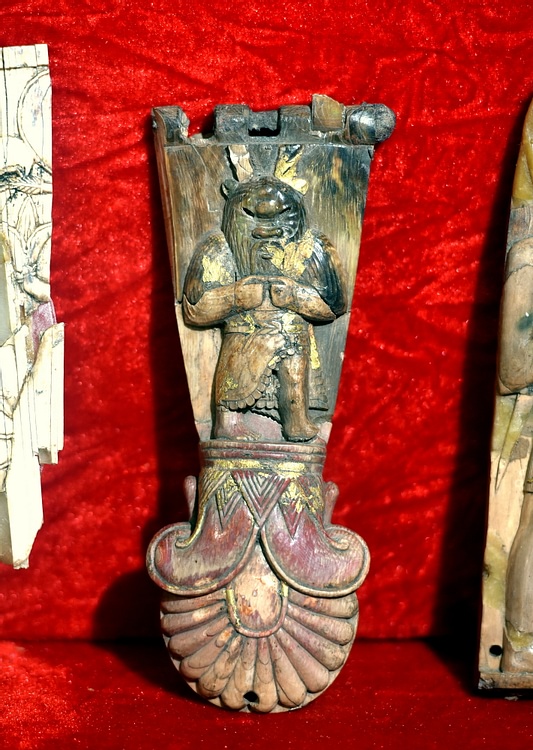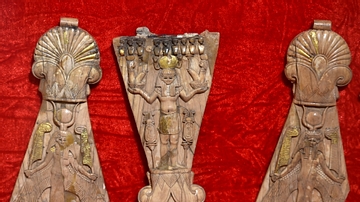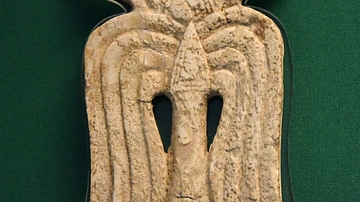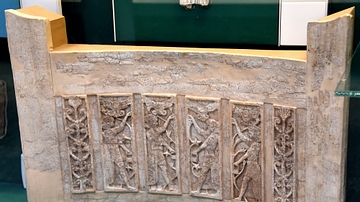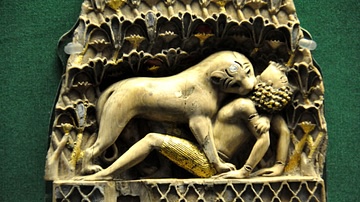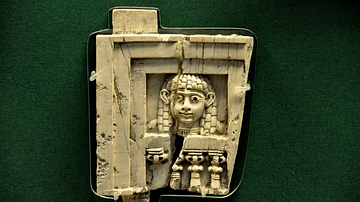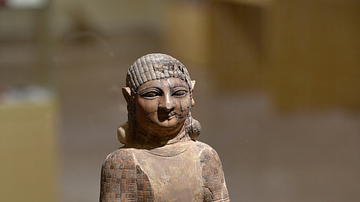Illustration
This ivory piece is part of the so-called "equestrian bridle-harness ornaments". It represents the lower part of a hinged frontlet, virtually complete. Most of the hinges and much of the iron pin have survived. A figure of the Egyptian god Bes was carved and represented frontally. Traces of the overlying gold can be seen. The palmette has a reddish rosy color.
Excavated by the State Board of Antiquities in Iraq, 1974-1975 CE season. From Well AJ at the North-West Palace, Nimrud, Iraq. Neo-Assyrian period, 9th to 7th century BCE. On display at the Iraq Museum in Baghdad, Republic of Iraq.
References
World History Encyclopedia is an Amazon Associate and earns a commission on qualifying book purchases.Cite This Work
APA Style
Amin, O. S. M. (2019, June 08). Ivory Horse Frontlet from Nimrud. World History Encyclopedia. Retrieved from https://www.worldhistory.org/image/10895/ivory-horse-frontlet-from-nimrud/
Chicago Style
Amin, Osama Shukir Muhammed. "Ivory Horse Frontlet from Nimrud." World History Encyclopedia. Last modified June 08, 2019. https://www.worldhistory.org/image/10895/ivory-horse-frontlet-from-nimrud/.
MLA Style
Amin, Osama Shukir Muhammed. "Ivory Horse Frontlet from Nimrud." World History Encyclopedia. World History Encyclopedia, 08 Jun 2019. Web. 23 Apr 2024.
